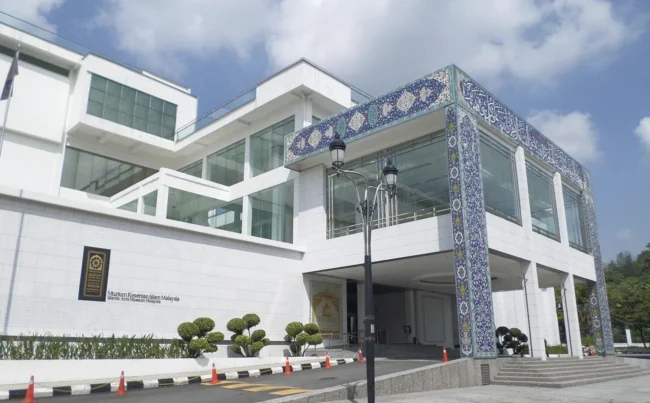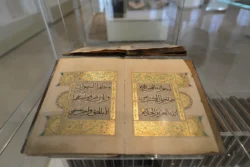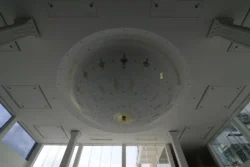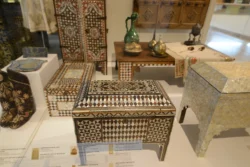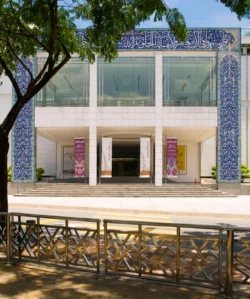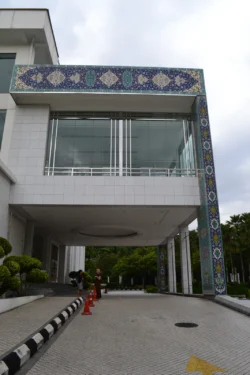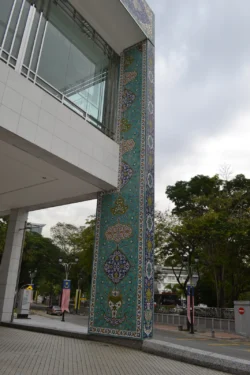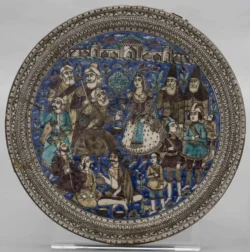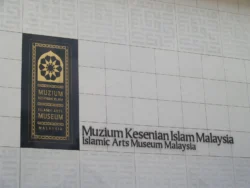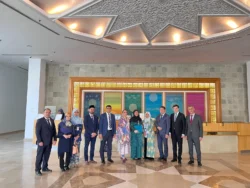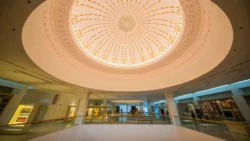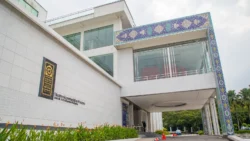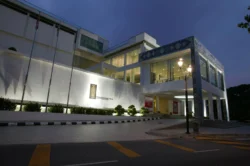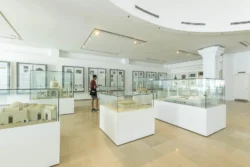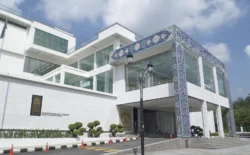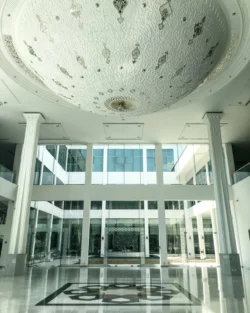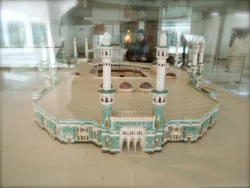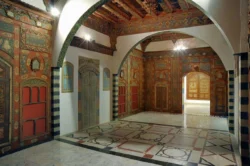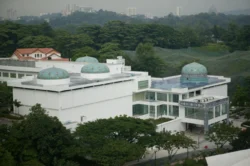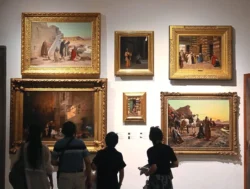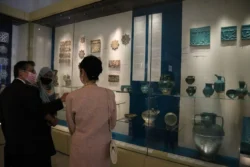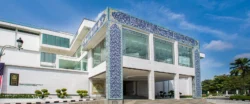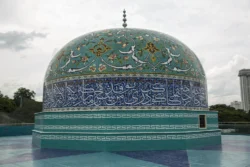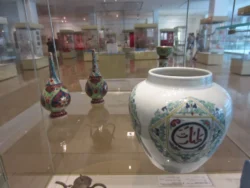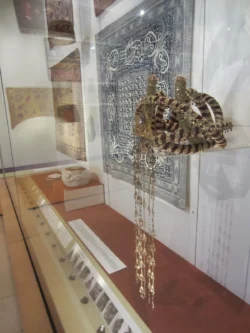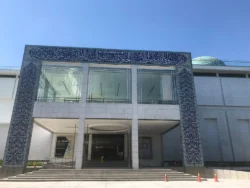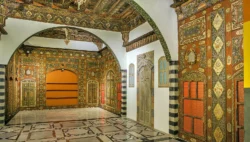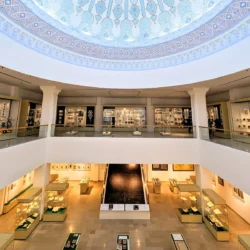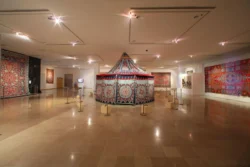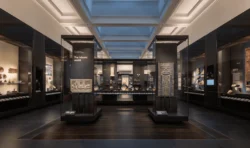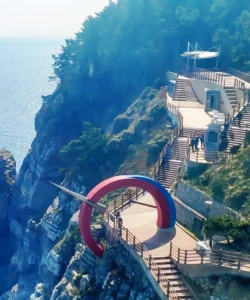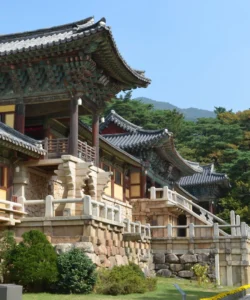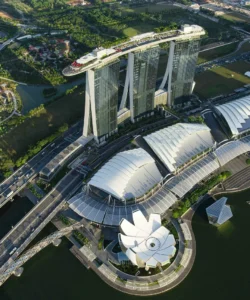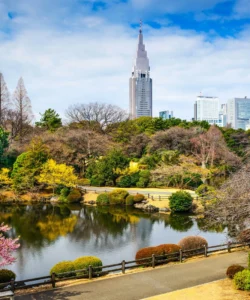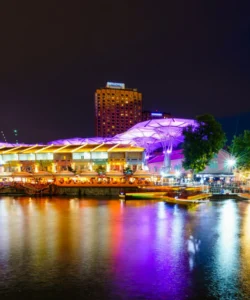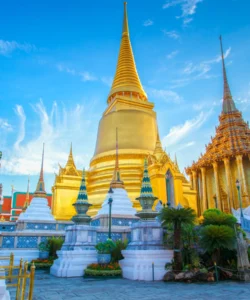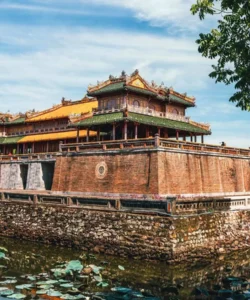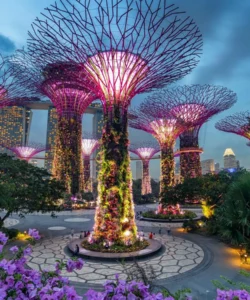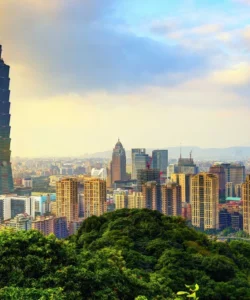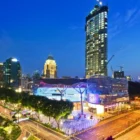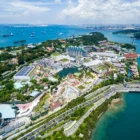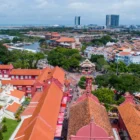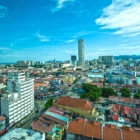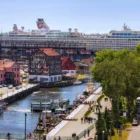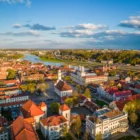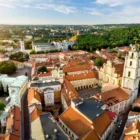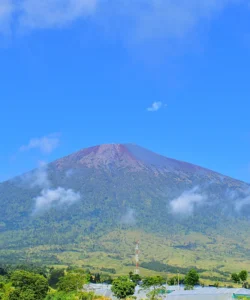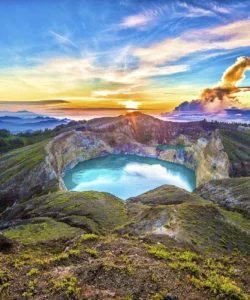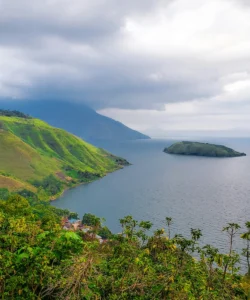The Islamic Arts Museum Malaysia (IAMM) is a cultural beacon in Kuala Lumpur, standing as Southeast Asia’s largest museum dedicated to Islamic art. It offers a profound journey through over 1,400 years of Islamic civilization, showcasing a vast and diverse collection of artifacts from across the Muslim world.
Name: Islamic Arts Museum Malaysia (IAMM)
Address: Jalan Lembah Perdana, 50480 Kuala Lumpur, Malaysia.
The museum is strategically located amidst the serene Perdana Botanical Gardens (formerly Lake Gardens), near other prominent landmarks like the National Mosque (Masjid Negara) and the Kuala Lumpur Railway Station.
How to Get There:
IAMM is quite accessible from various points in Kuala Lumpur:
- By Train (KTM Komuter): The closest station is Kuala Lumpur KTM Station, which is about a 5-minute walk from the museum. This station is served by the KTM Komuter lines.
- By LRT (Light Rail Transit): The Pasar Seni LRT Station (Kelana Jaya Line) is also within walking distance (around 7-10 minutes), though some find the walk slightly more complex. You can also consider alighting at Muzium Negara MRT Station and walking through the botanical gardens.
- By Bus: Several RapidKL bus routes serve the area, with stops near Masjid Negara or Pasar Seni. The GOKL City Bus (Red Line) also has a stop at Masjid Negara, which is a short walk away.
- By Taxi/Ride-Sharing (Grab): This is a convenient option for a direct drop-off. Free parking is available at the museum for those driving.
- KL Hop-On Hop-Off Bus: The museum is a designated stop on the KL Hop-On Hop-Off sightseeing bus route (get off at the Perdana Botanical Garden stop).
Landscape and Architecture:
The Islamic Arts Museum Malaysia is renowned for its architectural beauty, which harmoniously blends modern design with traditional Islamic elements.
- Modern with Islamic Details: The building, opened in 1998, occupies 30,000 square meters. Its exterior features clean lines and contemporary construction, but integrates subtle yet striking Islamic architectural details.
- Turquoise Domes: The most distinctive exterior features are its five large turquoise-colored domes on the roof, inspired by the dome-construction traditions of Central Asia. These domes have become a landmark on the Kuala Lumpur skyline.
- Iwan-style Entrance: The main entrance is reminiscent of an “iwan” (a vaulted hall or space, walled on three sides and open on one side) found in traditional Islamic architecture, adorned with beautiful Iranian tile work that resembles a ceramic tapestry.
- Light and Space: Inside, the museum is characterized by its spacious, airy galleries and abundant natural light that streams in through the domes and oculi. The angularity of 21st-century design is softened by the rounded forms of the domes that dominate the interior, creating a peaceful and harmonious ambiance.
- Central Courtyard: The building is designed around an open-space central courtyard, allowing for maximum light penetration and cross-ventilation, a common element in Islamic architecture.
- Lush Surroundings: The museum is set amidst the verdant and well-manicured Perdana Botanical Gardens, providing a serene backdrop and a tranquil environment for visitors.
What Makes It Famous:
- Southeast Asia’s Largest Islamic Arts Museum: IAMM holds the distinction of being the biggest museum of Islamic arts in Southeast Asia, housing a vast and comprehensive collection.
- Extensive and Diverse Collection: It boasts over 10,000 artifacts spanning over 1,400 years of Islamic civilization, from the earliest periods to the present day. The collection is exceptionally diverse, covering items from across the Islamic world, including the Middle East, India, China, and particularly emphasizing the Malay World (Southeast Asia), which is often underrepresented in other major Islamic art museums.
- Highlight Galleries: Its twelve permanent galleries showcase various themes, including:
- Architecture Gallery: Features impressive scale models of famous mosques and Islamic buildings from around the world (e.g., Masjid al-Haram in Mecca, Taj Mahal).
- Qur’an & Manuscripts Gallery: Displays ancient Qur’an fragments, illuminated manuscripts, and rare texts on science and philosophy.
- Textile, Jewellery, Metalwork, Ceramics, Arms & Armour Galleries: Showcases exquisite craftsmanship in various materials.
- Malay World Gallery: Focuses on Islamic art from the Malay Archipelago, southern Thailand, and the Philippines.
- Chinese and Indian Galleries: Highlight the unique Islamic artistic traditions from these regions.
- Architectural Beauty: The museum building itself is an architectural marvel, blending modern aesthetics with traditional Islamic motifs and becoming a landmark on the Kuala Lumpur skyline.
- Promotes Scholarship and Education: Beyond exhibitions, IAMM is dedicated to research, conservation, and education, promoting a deeper understanding and appreciation of Islamic art and culture through workshops, lectures, and publications.
Differences from Some Other Wonders:
- Specialized Thematic Focus: Unlike general history or art museums, IAMM has a highly specialized focus on Islamic Arts and Culture. While many other wonders celebrate natural landscapes (Mount Kinabalu, Taman Negara) or broader multicultural heritage (George Town, Malacca City), IAMM provides an in-depth exploration of a specific civilization’s artistic output.
- Museum as the Primary “Wonder”: Its “wonder” lies within its curated collection and the impressive museum building itself, rather than being a natural formation or a city’s historical urban fabric.
- Emphasis on Asian Islamic Art: While it covers the entire Islamic world, IAMM is particularly known for its strong representation of Islamic art from Asia, especially China and the Malay World, a focus that might be less prominent in Islamic art collections in Western museums.
- No “Big Ticket” Outdoor Attractions: Unlike Legoland or Sunway Lagoon, which are theme parks with thrilling rides, or the Petronas Towers with their observation deck and sky bridge, IAMM offers a calm, contemplative, and educational indoor experience.
- Cultural and Intellectual Engagement: Its primary appeal is intellectual and cultural, offering insights into a rich artistic heritage, rather than providing adventure, beach relaxation, or adrenaline-pumping thrills.
- Strategic Location within a Garden: Its setting within the Perdana Botanical Gardens offers a serene and green environment that complements the museum’s tranquil atmosphere, providing a pleasant contrast to the bustling city.
